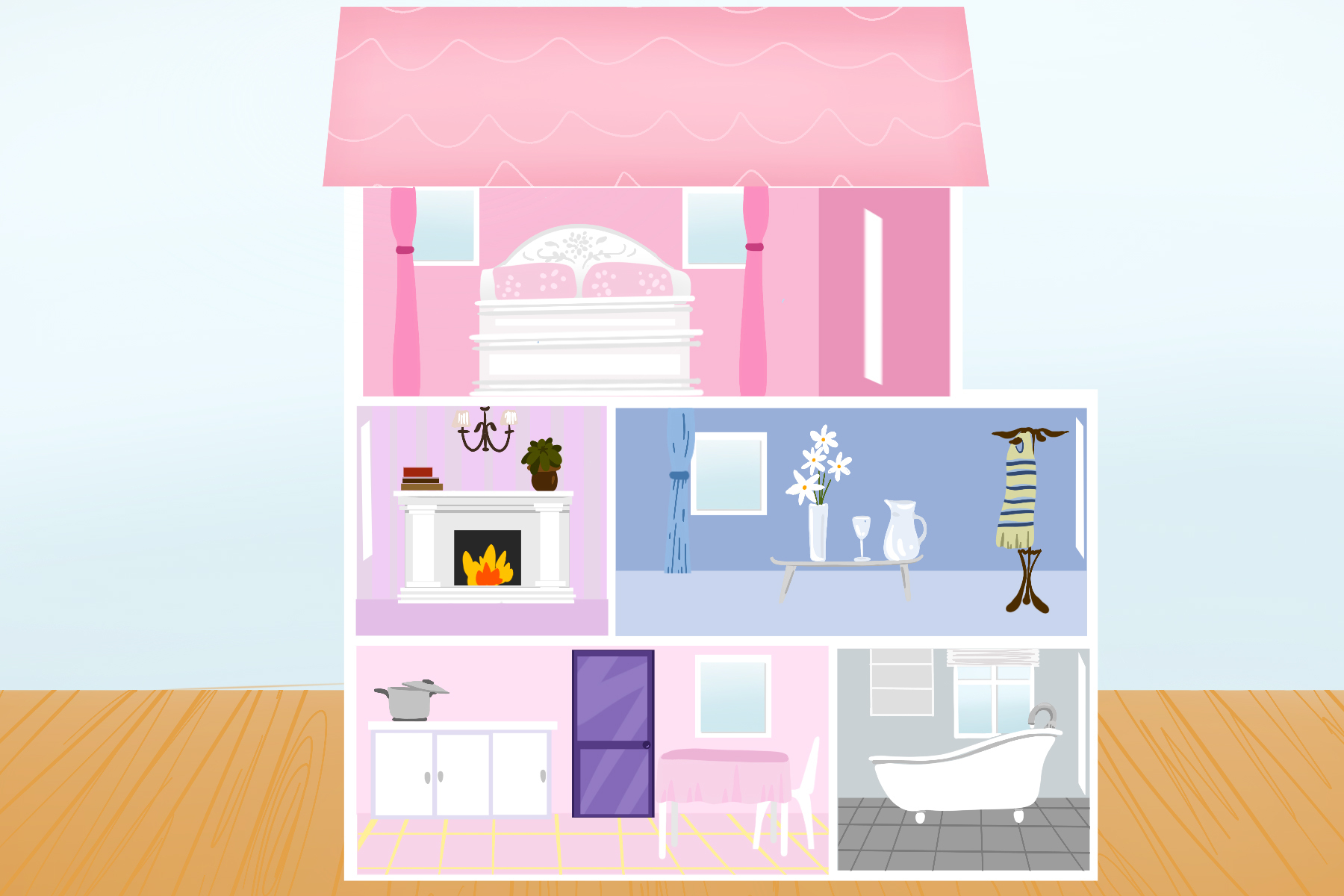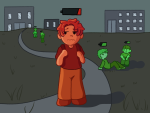For years now, HGTV has thrived as a source of entertainment for home improvement aficionados. From the many renovation-related programs and spinoffs from “Property Brothers” to “Love It or List It,” it is clear that audiences are drawn to watching homes be built or fixed. Now, people are getting in on the action themselves by building realistic dollhouses, and their works are flooding social media.
During quarantine, people have been looking for hobbies to fill their free time. One of the activities that exploded across social media was making dollhouses. These miniature homes are done so realistically that, while scrolling, they can be mistaken for real homes.
The concept of building dollhouses is actually not a recent one. They actually began to be made in the 17th century in Europe and were intended for adults. These detailed houses were often Victorian style, and had a decorative purpose, not one for playing. Then over time, dollhouses were used to teach girls how to take care of a household. As mass production developed and societal ideas changed, the dollhouse transformed from a tool meant to teach young women, to a toy meant for all to play with.
In fact, New York houses the Gulliver’s Gate museum, which has a massive collection of miniature houses depicting Latin America, the Middle East and even New York itself. Walking through its intricate galleries transports visitors to a wide array of places that reflect years’ worth of painstaking work. Though it is truly an architectural feat, the museum is still for a niche audience that wants to see the work and is willing to pay the $36 ticket fee.
Now, these dollhouses can be made at home for a fraction of the price. Starting with cardboard, printed wallpapers and a lot of glue, anyone can make a basic dollhouse in their home. Of course, as they begin to add more details — little fruit bowls here, a rug there — the dollhouse roars to life. For those willing to pay more, they can also buy premade decorative pieces to go into their dollhouses, like a tiny potted plant statue from Michael’s.
The beauty of these dollhouses is that people are able to bring their dream home to life. Instead of paying hundreds of thousands of dollars or more on a property and having little left for furniture and decorations, the dollhouse provides a cheaper, more cathartic alternative. This is especially true during the pandemic, as the unemployment rate is high and people are struggling to pay rent.
It’s a means of living vicariously in the perfect home. “They don’t have any money and a lot of them can’t afford to buy houses and they’re living at home with their parents or in a tiny apartment with roommates and they can’t do design and all the things that they want to do,” said Kwandaa Roberts to The New York Times. “But like me, they can get a lot of their creative energy out on a dollhouse”
Instagram reveals an increasing interest in making dollhouses. The hashtag “dollhouse” brings up 1.8 million posts. One of the more popular accounts, my_mini_mansion, has over 7,000 followers. They post photos and videos of an elegant dollhouse mansion. In one post, as classical music plays in the background, the viewer is taken on a tour and shown a seating room with a grandfather clock and a chandelier, as well as a bedroom with a rocking horse. The white and baby blue theme mimics a feasible home design in real life.
https://www.instagram.com/p/CEbdhZWprhu/
When it comes to making these dollhouses, it’s really no different from popular games today. Making different pieces of furniture is like using the crafting table in Minecraft. Designing a storyline for a house and even characters to live in it is akin to The Sims franchise or any role-playing game.
Essentially, Instagram allowed for a space for people who weren’t just sharing sunsets and cute puppies. Communities can share content from cartoons to watercolors to handmade clothing. It allowed artists and content makers to have a platform to showcase their work. At the same time, it also exposed new audiences to projects they did not think possible. “If the rise of Instagram hadn’t happened, neither would this resurgence of dollhouses. All of a sudden the focus is on visual content. And it’s a way to form connections with people,” said Stephanie Wallace, a dollhouse furniture maker in Australia.
Since 2018, this community, where Wallace got her start, has only grown. She began to design dollhouse furniture in order to “…stimulate my brain again so I could feel like a human, not just a mum, for a little bit of time.” After posting her creations to Instagram, she started to receive messages from people asking her to make them pieces too. Currently, she runs an Etsy shop that sells her miniature pieces.
Now with quarantines and social distancing measures, more people have joined in the world of dollhouse-making. TikTok shows numerous videos of dollhouse renovations and each one goes into depth on how to do it.
One account, mini india kitchen, actually gets into the post-production part of making dollhouses. For example, one of its videos focuses on making Nylon Khaman in the little dollhouse kitchen. As the Indian song “Manohari” plays in the background, the chef whips up a meal probably fit for an ant. With the home matching the vibe and layout of most homes in South Asia, it shows that the dollhouse trend is not just in the United States. The community truly branches out to other artists around the world.
@minikitchenindia Nylon Khaman #SwagStepChallenge #minikitchenindia #minikitchen #foodlover #dollhouse #doll #miniature #desifood #tinyfood #minifood #foryourpage
♬ Manohari (From “Baahubali – The Beginning”) – Mohana Bhogaraju & Revanth
So, the next time you find yourself with nothing to do, build a dollhouse. Take some cardboard from one of your boxes from online shopping, get the glue ready and build yourself your own miniature world of imagination.


















Thanks for sharing this information speed stars free game. I really like your blog post very much. You have really shared a informative and interesting blog post with people.
The house’s shape is also very impressive. It is a place visited every day by slope run
This article highlights a fascinating trend! Dollhouses offer a creative outlet and a sense of control, especially appealing during uncertain times. It’s a clever way to explore design and build dream spaces on a smaller scale.
This dollhouse is truly beautiful and looks just like a real-life Geometry Dash Spam Test home. From this, it’s clear that the trend of making miniature toys is rapidly growing.
People have found your blog article to be both fascinating and educational.
An interesting tendency is highlighted in this article! Particularly in these times of uncertainty, dollhouses provide a creative outlet and a feeling of control. It’s an ingenious method to start small while exploring design and creating your ideal spaces.
This article is great. During the quarantine period, there are many games or hobbies that we have long forgotten suddenly become attractive Racing Limits again.
Wow, dollhouses are making a comeback! It’s so cool how people are using them as a creative outlet during quarantine. Saw some amazing dollhouse creations on Instagram! The level of detail is insane. Gotta check out the Gulliver’s Gate museum someday!
Wow, dollhouses are making a comeback! It’s so cool how people are using them as a creative outlet during quarantine. Saw some amazing dollhouse creations on Instagram! The level of detail is insane. Gotta check out the Gulliver’s Gate museum someday!
Such a cool way to unleash creativity during quarantine. These miniature homes are super detailed!
Wow, dollhouses are making a comeback! Who knew? Such a cool way to unleash creativity during quarantine. These miniature homes are super detailed! Instagram is fueling this trend for sure.
Wow, dollhouses are making a comeback! Who knew? Such a cool way to unleash creativity during quarantine. These miniature homes are super detailed! Instagram is fueling this trend for sure.
This dollhouse trend is such a creative outlet, blending nostalgia with modern craftsmanship! It’s amazing how people are turning cardboard and glue into dream homes, especially during quarantine. Pairing this with the spider lollipop craft and Ankylosaurus cake could make a fantastic Halloween event activity at Mother Earth Nampa—kids could craft mini spooky houses!
“Just visited the 顔面偏差値測定 サイト — it was really fun and interesting to see how facial features are rated and analyzed!”
“Just played Move the Block: Slide Puzzle — super addictive and satisfying! It really makes you think strategically to clear each level.”
Discover powerful tools and options for creating your online presence. Explore website alternatives that offer flexibility, affordability, and unique features to suit every digital need.